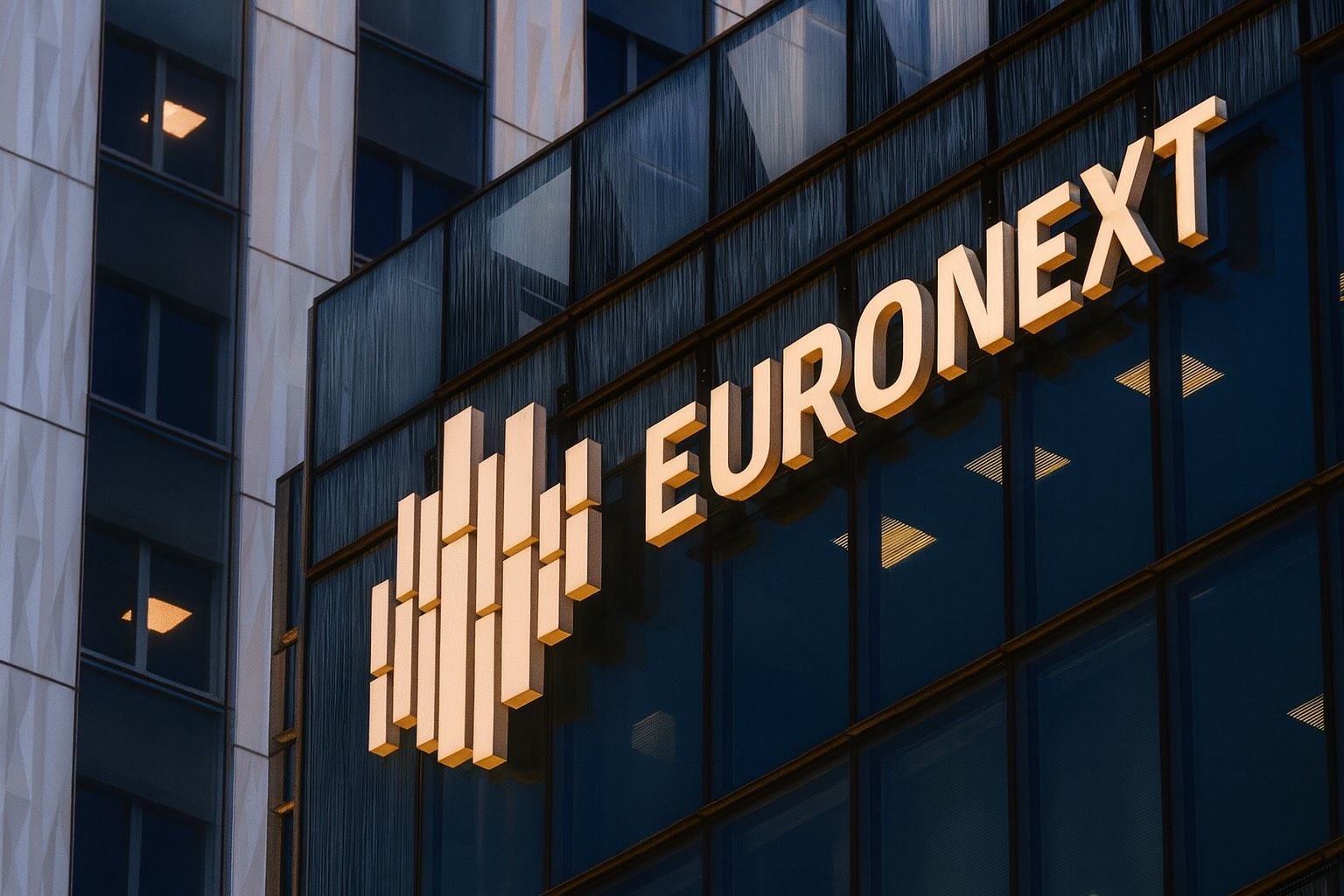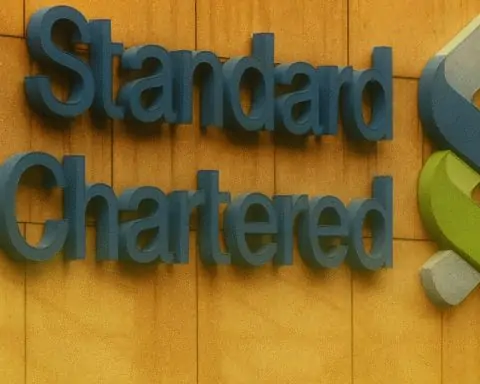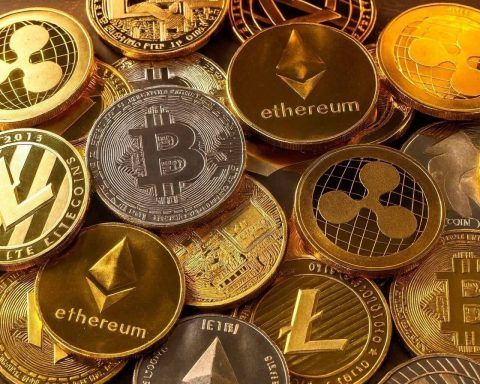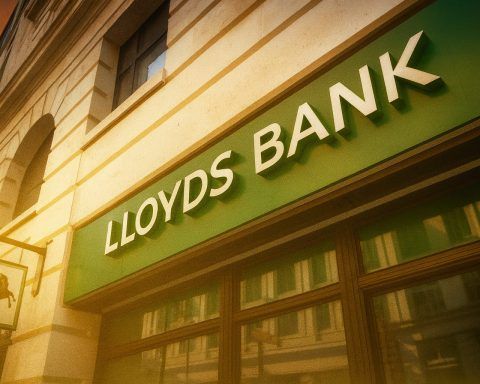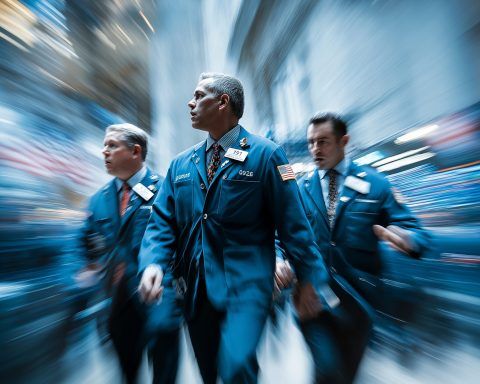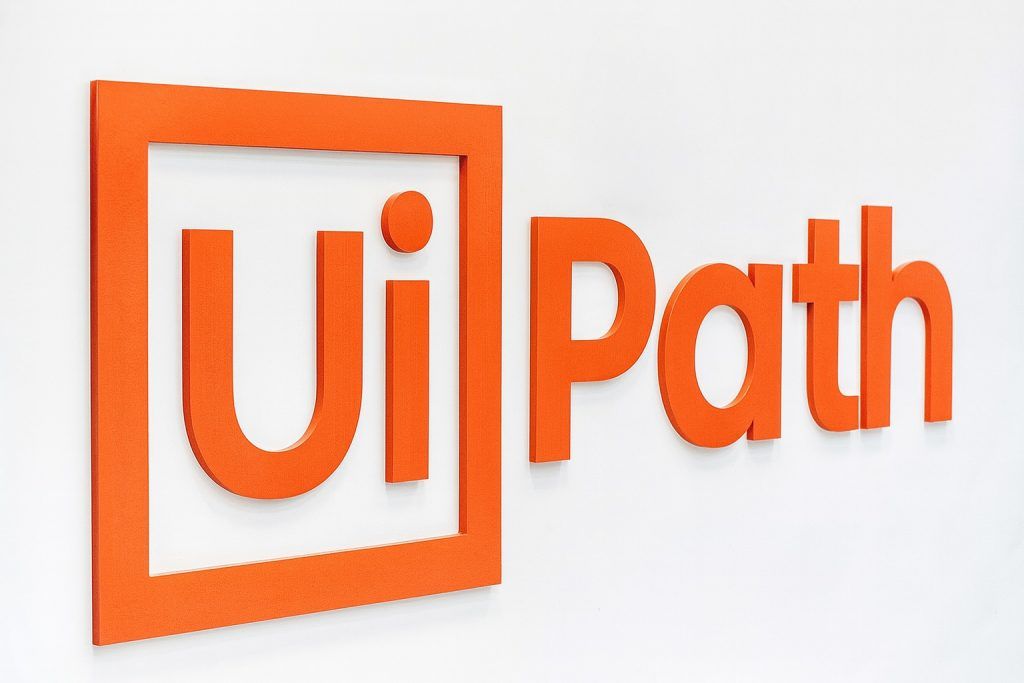- Historic Exchange: Founded in 1724 as the Paris Bourse, it evolved into Euronext Paris in 2000 after merging with the Amsterdam and Brussels exchanges [1]. It is now Europe’s second-largest stock exchange by market capitalization, behind only London, with nearly 800 listed companies valued over $4.5 trillion [2].
- Pan-European Role: Paris is a founding market of Euronext N.V., a pan-European exchange group spanning Paris, Amsterdam, Brussels, Dublin, Lisbon, Oslo, Milan, and more [3]. Euronext’s Paris market hosts over 800 companies and ~5,300 institutional investors, sharing a common liquidity pool with other Euronext venues [4]. As of September 2025, Euronext’s exchanges host 1,700+ issuers worth €6.5 trillion and handle about 25% of all European stock trading [5].
- Key Index – CAC 40: Euronext Paris is home to the CAC 40 index, France’s blue-chip index tracking 40 of the largest French companies. The CAC 40 (from “Cotation Assistée en Continu”, meaning continuous trading) includes giants like LVMH, TotalEnergies, L’Oréal, Airbus, and BNP Paribas [6] [7]. The CAC 40 is a bellwether for the French economy and European markets.
- Trading Hours & Platform: The Paris exchange operates Monday to Friday, 9:00am to 5:30pm Central European Time (CET) with no midday break [8]. Trading is fully electronic via Euronext’s high-speed Optiq® platform, providing a single order book across Euronext markets. Average daily trading turnover is about €4.1 billion on the Paris market [9].
- Recent Performance: The CAC 40 index recently neared record highs, closing around 8,045 on October 8, 2025 [10]. This marks a ~10% gain year-to-date and reflects robust momentum despite volatility. In 2025 the CAC 40 has climbed on easing inflation and an AI-fueled tech rally, though it remains a few percent below its all-time peak (~8,259 in March 2025).
- Major 2025 Developments: In a symbolic milestone, Euronext N.V. (the exchange operator) was added to the CAC 40 index on September 22, 2025 [11] [12]. Paris’s market has seen strong listings activity (50 IPOs by late September 2025) and increased trading volumes year-over-year. However, French politics turned turbulent – the Prime Minister’s resignation in October 2025 shook investor confidence [13]. Global factors like U.S. tariff tensions have also swung Parisian stocks in recent weeks.
- Market Indicators: The CAC 40’s flagship status means it reacts to global trends. Luxury goods stocks (over 20% of the index by weight) have been sensitive to China’s demand and U.S.–China trade news, while bank stocks have benefited from rising interest rates [14] [15]. Analysts say France’s large budget deficit and political gridlock pose risks, yet French blue chips continue to trade at attractive valuations if external headwinds abate [16].
Historical Evolution: From Paris Bourse to Euronext Paris
Euronext Paris traces its origins back over 300 years. The exchange was formally established by royal decree in 1724, making it one of the oldest in the world [17]. Throughout the 19th and 20th centuries, the Paris Bourse (as it was known) was France’s central marketplace for stocks and bonds. It operated via open-outcry trading on the floor of the Palais Brongniart well into the 1980s [18]. By 1986, Paris began shifting to electronic trading, introducing a system called CAC (Continuous Assisted Trading) which fully automated quotations by 1989 [19]. This early adoption of electronic trading positioned Paris as a modern exchange, ready to integrate with its European peers.
The late 20th century brought consolidation. In 2000, the Paris Bourse’s operator (SBF) merged with the Amsterdam and Brussels exchanges to form Euronext, Europe’s first cross-border stock exchange [20]. The Paris market was rebranded Euronext Paris, marking the end of the independent Paris Bourse era and the start of a pan-European venture [21]. Subsequent expansions saw Euronext absorb the Lisbon exchange and other platforms, and even a transatlantic tie-up (merging with the NYSE in 2007 before a later spin-off). Through these changes, the Paris exchange remained a cornerstone, contributing major listings and liquidity to the Euronext group.
Today, Euronext Paris blends its rich heritage with a global outlook. It maintains deep roots in France’s financial system while benefiting from Euronext’s international network. Notably, in 2021 Euronext acquired the Italian Borsa Italiana, and in 2025 it signaled plans to expand into Athens [22] – moves that further enlarge the group’s footprint. Paris’s exchange is no longer a standalone bourse; it’s one hub in Europe’s largest integrated marketplace, illustrating how far it has evolved from the days of the curbside “Coulisse” market and brokers in top hats.
Role Within Euronext and the European Financial System
As one of Euronext’s flagship markets, Euronext Paris plays a pivotal role in European finance. Euronext N.V. is headquartered in Amsterdam, but Paris is its largest market by market cap and trading activity. France’s exchange hosts some of Europe’s most valuable corporations, especially in sectors like luxury goods, energy, banking, and aerospace. This gives Paris outsized influence on regional indices like the Euro STOXX 50 and STOXX Europe 600. In fact, Euronext Paris is Europe’s #2 stock exchange by value (after London) [23], underscoring Paris’s importance alongside London and Frankfurt as pillars of European capital markets.
Within Euronext’s federal model, Paris contributes significantly to the group’s revenues and listings. The group operates unified trading platforms (like Optiq), clearing houses, and settlement systems across its markets [24]. This integration means a stock listed in Paris can be traded by investors across Europe seamlessly, and brokers connect via a single membership to access multiple countries. Paris also often leads in listing the largest IPOs on Euronext – for example, many French tech “unicorns” and multinational companies choose Paris for their primary listing. As of 2025, more than 800 companies are listed in Paris alone [25], out of ~1,700 across all Euronext venues.
The exchange’s prominence is highlighted by Euronext NV’s inclusion in the CAC 40 index in September 2025, a point of national pride and a sign of the exchange group’s growth [26] [27]. “Our inclusion in the CAC 40 is a testament to the remarkable journey we have undertaken since our IPO in 2014,” said Stéphane Boujnah, Euronext’s CEO, noting the group’s expansion into seven countries and its “pivotal role in… shaping European capital markets” [28]. In practical terms, Euronext Paris is the primary venue for French equity trading and fundraising, and it anchors Euronext’s position as the leading European market infrastructure. The group now handles a quarter of all lit (on-exchange) equity trading in Europe [29], with Paris as a major contributor to that liquidity pool.
Furthermore, Paris’s exchange is tightly interwoven with the European financial system through regulatory and monetary links. It falls under the supervision of the French regulator (AMF) and European regulators, and uses the euro as its trading currency. Many Paris-listed firms are global leaders (e.g. LVMH in luxury, TotalEnergies in oil & gas, Airbus in aerospace), so Euronext Paris effectively channels global investment into European industry. Post-Brexit, Paris has even vied to attract more international listings and trading activity from London. All these factors make Euronext Paris not just a French institution but a key barometer of Europe’s economic health and investor sentiment.
Operational Structure, Trading Hours, and Key Indices
Euronext Paris operates as a fully electronic exchange with trading hours from 9:00 AM to 5:30 PM CET, Monday through Friday (aligning with 8:00 AM–4:30 PM GMT) [30]. There is no midday shutdown, unlike some Asian markets, ensuring continuous trading through the session. Trading is conducted via the Optiq platform which centralizes order-matching for stocks, bonds, ETFs, derivatives and more across all Euronext markets. Members (banks, brokers, etc.) connect to Optiq to trade Paris-listed securities under a harmonized rulebook. Euronext Paris offers several market segments: the main regulated market, a mid-cap Growth segment, and Access markets for SMEs, each with differing listing requirements. Regulated trading hours are followed by limited after-hours or closing auction periods for certain instruments, but the bulk of liquidity concentrates in the standard day session.
The exchange’s market structure is order-driven, meaning buy and sell orders directly interact in the order book (as opposed to market-maker driven). This tradition traces to the old Paris Bourse where official brokers matched orders – a legacy that continues with Euronext’s high transparency order books [31]. Trades are cleared through Euronext’s clearinghouse and settled in central securities depositories. Governance-wise, Euronext Paris is one of the national subsidiaries of Euronext N.V., headed by CEO Delphine d’Amarzit (the first woman to lead the Paris exchange) [32]. Operational oversight is coordinated group-wide, but local expertise is maintained for listings, market surveillance, and client coverage in France.
Key Indices: The marquee index is the CAC 40, which captures around 70% of the Paris market’s capitalization. It is a free-float market-cap weighted index of 40 top companies across industries – from luxury conglomerates (LVMH, Hermès, Kering) and financial giants (BNP Paribas, Société Générale) to industrial leaders (Airbus, Schneider Electric) and consumer staples (L’Oréal, Danone). The CAC 40 is often compared to other major indices like Germany’s DAX or the UK’s FTSE 100. Its movements are closely watched; as Investopedia notes, it “gives a general idea of the direction of Euronext Paris” and by extension the French stock market [33]. Other indices on Euronext Paris include the CAC Next 20 (the next 20 largest firms after the CAC 40, serving as a “bench” for future CAC entrants), the broader SBF 120, and thematic indices such as CAC 40 ESG (launched 2021 to track top firms with strong ESG scores) [34]. There are also mid-cap and small-cap indices (CAC Mid 60, CAC Small), reflecting the full spectrum of Paris-listed companies.
Major Listed Companies: Euronext Paris is home to some of the world’s biggest companies by market cap. As of 2025, the largest is LVMH Moët Hennessy Louis Vuitton, a luxury empire that at times has exceeded €400 billion in value (making it briefly Europe’s most valuable firm) [35]. Other heavyweights include oil & gas multinational TotalEnergies, pharmaceutical maker Sanofi, cosmetics giant L’Oréal, and Europe’s largest bank BNP Paribas. Sectors well-represented in Paris are Luxury Goods, Finance, Energy, Aerospace/Defense, and Industrial Manufacturing. This diversity means the CAC 40’s fortunes are tied to global consumer demand (especially in China for luxury sales), commodity price swings, and global trade and investment cycles.
Notably, Société Générale, one of France’s top banks, has seen a standout stock performance in 2025 – its share price has doubled (+100%) this year, making it the best performer in the index [36]. Defense and aerospace stocks are also surging: for example, Thales (defense electronics) is up over 50% year-to-date amid higher European defense spending [37]. These examples underscore how individual Paris-listed companies can significantly move the indices. Euronext Paris also lists foreign multinationals (through secondary listings or Euronext Access), but the CAC 40 remains focused on French-headquartered businesses.
Recent Market Performance and Trading Trends
Paris’s equity market has been on a generally upward trajectory through 2025, even as it navigates bouts of volatility. In the first three quarters of 2025, the CAC 40 posted solid gains. By early October 2025, the index was up roughly 10% year-to-date, outpacing many global peers [38]. The summer of 2025 saw the CAC 40 rally to near-record levels – it approached the 8,200 range, not far from its all-time high (8259) reached in spring 2025 [39]. Drivers of this strong performance have included: easing inflation in Europe, hopes of central bank rate cuts, and excitement over technology and AI-related stocks which lifted markets globally [40] [41]. For instance, semiconductor firm Soitec in France jumped mid-2025 on booming demand linked to artificial intelligence chips [42], reflecting how the tech rally benefitted Paris.
However, the ascent has not been without pauses. Through recent months, trading volumes and volatility have spiked around key events. One example is late September 2025, when sudden U.S. tariff announcements and political uncertainty in France led to wild swings. Over a “wild 48 hours” in European markets, major indices like the CAC 40 fell ~0.5% in one session then rebounded the next [43]. TS2.tech described the period as encapsulating a push-and-pull between optimism (from cooling inflation and strong earnings) and anxiety (over geopolitics and policy), resulting in a “volatile but ultimately range-bound market” that remained just below 2025 highs [44]. In other words, dips have been quickly bought as investors retain a generally bullish outlook on European equities.
Trading volumes on Euronext Paris have been healthy. Euronext’s reports show that equity trading activity in 2025 has grown year-on-year, with September 2025 volumes jumping compared to 2024. (The exchange handled increased transactions amid the market rally and a surge in new listings.) Average daily trading value, about €4 billion, was slightly higher through mid-2025 than the previous year [45]. This reflects both higher stock prices (driving value traded) and occasional volatility spurts that boost turnover. Market observers note that volume tends to spike during index rebalancing events or major news – for instance, when Prime Minister Lecornu suddenly resigned on October 6, 2025, Paris trading floors saw a flurry of activity as the CAC 40 slid over 1% that day [46].
Sector-wise, luxury goods and technology have led recent gains, while some cyclicals lagged. Over the past quarter, luxury stocks recovered from earlier weakness: market heavyweight LVMH, after dipping mid-year on fears of softer Chinese demand, stabilized and helped lift the index in September [47]. Banks have been another pillar of strength – rising bond yields in Europe (10-year French yields hit multi-year highs around 3.5%) improved margins for lenders, so shares of Société Générale, BNP Paribas, and Crédit Agricole climbed, supporting the CAC 40 [48]. On the other hand, auto manufacturers and some industrials saw choppier performance, hit by raw material costs and U.S. trade worries (e.g. Michelin shares fell on higher rubber costs and U.S. tariff threats on autos) [49]. Still, even these sectors bounced at times; Renault stock, for example, defied the market drop in late September by rising on a positive dividend announcement [50].
In terms of broad market metrics, the Paris market’s recent trend can be summarized as cautiously optimistic. The CAC 40 volatility index (VCAC) has remained relatively low by historical standards, and the index’s pullbacks in 2025 have been shallower than in 2022–2023. International investors have been net buyers of French equities this year, attracted by comparatively lower valuations and strong dividend payouts. The STOXX Europe 600 index (pan-European) was up about 9% for 2025 as of early October, and France’s market was a big contributor to that performance [51]. Overall, trading sentiment in Paris in recent months has been bullish, albeit with a close eye on central bank signals and political headlines.
Current Index Levels and Notable Stocks (as of October 8–9, 2025)
As of October 9, 2025, the CAC 40 index hovers around the 8,050 mark, near its highest levels of the year [52]. On October 8, it closed at approximately 8,045 points after a multi-day rally, putting it within ~3% of its record peak. This level represents a strong recovery from any dips earlier in the year; for context, the index was near 7,200 at the end of September during a brief political scare [53], and has since rebounded impressively in early October. The market capitalization of the CAC 40 is roughly $3 trillion as of this date [54], highlighting France’s heavyweight status in Europe.
Several individual stocks have made headlines with notable moves going into October 2025:
- Société Générale (GLE) – The French banking group’s stock has surged ~100% year-to-date, the best performance among CAC 40 constituents [55]. Strong earnings (revenue up 8.6% in first half) and a strategic overhaul under new management boosted investor confidence. SocGen’s rally underscores the robust rebound in European bank stocks as interest rates stopped rising. It also recently announced share buybacks and a shift to quarterly dividends, further pleasing investors [56].
- Thales (HO) – Shares of defense and aerospace firm Thales have climbed over +50% in 2025, benefiting from increased defense budgets across Europe [57]. France’s commitment to military spending, along with geopolitical tensions, have lifted defense contractors. Peers like Safran (jet engines) and Airbus (aircraft) also saw double-digit percentage gains, helped by a rebound in aviation and defense orders.
- Luxury Conglomerates – LVMH & Kering – The luxury giants had a mixed 2025. LVMH, the largest CAC component, hit an all-time high earlier in the year but then cooled; concerns about slower demand in China and high interest rates curbing affluent consumer spending caused LVMH to slide in Q3 [58]. By October it stabilized, and year-to-date it’s roughly flat to modestly higher. Rival Kering (owner of Gucci) struggled more, down for the year amid brand-specific challenges and was recently off about 2% on U.S. tariff jitters [59]. Still, any improvement in China’s economy or a softer euro could quickly boost these stocks given their global reach.
- Technology and Chip Stocks – French semiconductor materials company Soitec has been a standout, with its stock jumping mid-year on strong results and optimism around AI chip demand [60]. It exemplifies how Europe’s tech segment, though smaller than the U.S.’s, is riding the global AI boom. Additionally, STMicroelectronics, a chipmaker partly listed in Paris, saw its shares oscillate; it fell ~2–3% on late September tariff concerns [61] but remains up over the year thanks to solid electronics demand.
- Automotive – Carmaker Stellantis (which spans Peugeot, Fiat, Chrysler brands) and Renault have lagged the CAC’s top performers. Stellantis shares were roughly flat in 2025, pressured by EV transition costs and periodic U.S. tariff scares (though a U.S.–EU auto tariff reduction in August provided some relief) [62]. Renault fared better, recently seeing a bump due to commitments on dividends and a successful spin-off of its EV unit. Auto stocks remain sensitive to global trade policy: “the specter of U.S. auto tariffs” hurt sentiment earlier, but actual tariff cuts later in the year helped stabilize these names [63].
- Energy – TotalEnergies (TTE) – The oil & gas major’s stock is up moderately in 2025, supported by high oil prices. In October, Brent crude remains elevated around $80–90, which has kept TotalEnergies near multi-year highs. Its hefty dividends also attract investors. Any shifts in OPEC policy or energy transition pressures can move this stock; for now it’s a pillar of the CAC 40 with stable performance.
In summary, by early October 2025 the market is broadly strong with a few pockets of weakness. Banks and industrials (like construction materials firm Saint-Gobain) have recently gained, whereas luxury and autos have been more volatile. The CAC 40’s breadth is reflected in about 25 of 40 stocks being in positive territory for the year. Notably, mid-cap and tech-oriented names in Paris have also rallied: the CAC Mid 60 and Next 20 indices are up, showing strength beyond just the top 40 firms. This environment sets the stage for how the exchange and investors will digest incoming news and economic data.
Breaking News and Developments (Early October 2025)
The first week of October 2025 brought significant news for Euronext Paris and its participants:
- Political Upheaval in France: On October 6, 2025, French Prime Minister Sébastien Lecornu abruptly resigned just one month into the job, causing the government to collapse [64]. This unprecedented political crisis immediately rattled financial markets. The CAC 40 dropped over 1.3% that day, making it Europe’s worst-performing index in that session [65]. French bank stocks fell 3–4% amid fears that policy paralysis would stall reforms [66]. “There seems to be no willingness in parliament for a budget to be passed… yields higher, pressure on euro,” observed Danske Bank analyst Kirstine Kundby-Nielsen as French bond yields spiked on the turmoil [67]. Investors demanded higher risk premia for French assets, with 10-year bond yields briefly hitting 3.6%, the highest in months [68]. While the market stabilized in subsequent days, the episode highlighted political risk: “As long as there’s no majority in parliament, no one will be able to tackle France’s debt… dealing with this issue will likely demand a full-blown crisis,” warned Mathieu Savary of BCA Research, underscoring concerns about France’s fiscal path [69]. This political uncertainty looms over Euronext Paris, though the quick rebound of stocks suggests traders are hopeful for a resolution or new elections.
- Euronext Joins the CAC 40: In more positive news, Euronext N.V. – the company that owns the Paris exchange – was officially added to the CAC 40 index on September 22, 2025. This rare inclusion of a stock exchange operator in its own blue-chip index is seen as a “milestone in Euronext’s growth”, reflecting how much the group has expanded since its 2014 IPO [70] [71]. Euronext’s market capitalization had swelled to €14.5 billion by August 2025, qualifying it for the index. The stock (ticker: ENX) has performed strongly, and its entry replaced a slower-growing company in the CAC lineup. Euronext’s CEO noted that “when Europeans decide to succeed together, they can transform capital markets… [this] illustrates Euronext’s pivotal role in the financial ecosystem” [72]. For the Paris exchange, having its parent company in the CAC 40 is symbolic of Paris’s central place in European finance. It also means index funds now buy Euronext stock, potentially supporting its price. This development came alongside Euronext’s announcement of plans to potentially incorporate the Athens Stock Exchange into its network, further extending its reach [73].
- Surge of IPOs and Listings: 2025 has been an active year for listings on Euronext Paris. By late September, 50 companies had listed on Euronext’s markets in 2025, with Paris accounting for a large share [74]. Notably, a string of tech SMEs and a few larger firms tapped the market. In early October, the successful U.S. IPO of Birkenstock (a German footwear brand) created buzz in Europe – TS2.tech reported that “shares of Euronext Paris got a lift from the successful IPO of Birkenstock in New York”, as traders anticipate more international listings and spin-offs could choose Paris next [75]. Additionally, French startup Prelude Therapeutics listed in Paris in late September (with a modest €19 million market cap) marking the 50th listing of the year [76]. The steady flow of IPOs indicates confidence in the Paris market’s liquidity. Euronext officials have touted Paris as a listing venue for tech and biotech firms, competing with London and New York for global capital.
- U.S.–EU Trade Tensions: A flare-up in transatlantic trade issues hit some Paris-listed stocks recently. In late September, the U.S. administration surprised markets with tariff threats on European goods, including a proposal for tariffs on imported medical devices and a review of auto import tariffs. This sparked a sector rotation: European healthcare stocks tumbled (Paris-based Sanofi dropped ~2.5% on the news) [77], and auto-related firms were initially hit by what one article dubbed “Trump’s tariff bombshell”. German truck-maker Daimler Truck’s share plunge served as a warning, and France’s Michelin tire company slid in sympathy [78]. However, by early October an announcement that the U.S. would reduce certain auto import tariffs for EU cars from 25% to 15% helped relieve pressure [79]. Stellantis shares in Paris ticked up on the confirmation of lower U.S. tariffs (even if the news was expected) [80]. Meanwhile, Europe’s response and negotiations remain in focus. For investors on Euronext Paris, these trade developments are critical – France’s market is highly sensitive to U.S. trade policy, given the CAC 40’s exposure to exporters. The back-and-forth in tariffs contributed to short-term volatility, but also demonstrated hopes that cooler heads will prevail in EU–U.S. trade relations.
- European Economic Signals: Recent days brought a mix of economic data. Eurozone inflation has been trending downward, and the European Central Bank in its September meeting held interest rates steady after a series of hikes. The ECB signaled patience as inflation nears target, effectively pausing further tightening [81]. For France, data showed consumer confidence stuck at a decade-low (INSEE index at 87 in September) [82], reflecting households’ cautious mood amid high living costs and political noise. Nonetheless, Eurozone GDP growth of +0.1% in Q2 2025 indicated the region skirted recession [83]. Germany’s announcement of a €500 billion infrastructure spending plan and other fiscal measures have improved sentiment across Europe [84]. These cross-currents – lower inflation but lukewarm confidence – feed into expectations that central banks might start easing in 2026. French equities have responded favorably to the prospect of stable or lower rates: yield-sensitive sectors like utilities and real estate got a bump in recent sessions on hopes that “peak rates are near” [85]. All in all, macro news in early October has been net supportive for Euronext Paris, aside from the domestic political hiccup.
In summary, the past few days encapsulate the mix of opportunity and risk facing Euronext Paris. A landmark achievement (Euronext’s CAC 40 entry) and strong market momentum contrast with political drama and trade disputes. The market’s quick recovery after shocks shows resilience, but upcoming developments (like how France’s leadership crisis resolves, and whether central banks pivot to rate cuts) will be closely watched by traders in La Défense and beyond.
Analyst Insights and Market Outlook
Looking ahead, analysts and market participants offer a range of perspectives on where Euronext Paris is headed and what factors will drive its trajectory:
- Market Sentiment: Many strategists remain cautiously bullish on French equities. “Post the most recent Fed moves, the market has coalesced around a scenario of no recession – and I think that view also holds in Europe,” noted Ben Lambert of Ninety One, as quoted by TS2.tech [86]. Indeed, optimism that the U.S. Federal Reserve’s easing cycle (which began with a rate cut in September 2025) will support global growth has been a tailwind for the CAC 40 [87]. European stocks are seen as attractive due to their valuation discount versus U.S. stocks and the boost from EU fiscal initiatives. A senior research strategist at Pepperstone, Michael Brown, pointed out the unresolved nature of France’s political woes, asking, “The bigger question is how does this all resolve itself?… there doesn’t seem to be an obvious solution or silver bullet” [88]. This suggests that while the economic backdrop is improving, political risk premium could linger in French markets until stability returns.
- Technical and Forecasts: Technical analysts observe that the CAC 40’s charts have turned positive. After the index’s dip to around 7,500 in August, it formed higher lows and broke through resistance at 7,950 in early October [89]. Crispus Nyaga, an analyst at Invezz, noted that the CAC 40 has “moved above its 50-day and 100-day moving averages” and even completed a bullish break-and-retest pattern, which often precedes further upside [90]. His outlook projects that the CAC 40 “will likely have a strong bullish breakout, potentially to… 8,500” in the coming weeks barring any major shocks [91]. That target implies room for a new all-time high. However, he also cautioned that a drop back below 7,800 would invalidate the bullish scenario [92], providing a clear risk level for traders to watch. The takeaway is that the technical momentum favors the bulls, but the market is not immune to setbacks.
- Sector Outlooks: Analysts are dissecting sector trends within the Paris market. Luxury Goods – Given their weight in the CAC, much depends on China’s economic recovery and U.S./European consumer spending. After underperforming for months, some experts see luxury stocks as poised for a comeback if Chinese demand picks up. Banking – Rising rates have already boosted profits; now, the question is how they fare if rate cuts commence. French banks are well-capitalized and diversified, so moderate easing could extend credit growth and support earnings. However, as Mathieu Savary warned, France’s fiscal issues (debt and deficit) could eventually pressure banks if bond markets force a reckoning [93]. Aerospace/Defense – This sector has a positive outlook thanks to full order books at Airbus and sustained defense budgets. Thales and Safran are expected to continue benefiting from geopolitical demand, though they trade near highs. Technology – France’s tech firms (aside from a few like Dassault Systèmes) are mostly mid-cap, but the broader European tech rally has legs due to the AI theme. As long as U.S. tech stocks remain buoyant, the sentiment spills over to Paris (for example, chipmaker STMicro’s outlook is tied to global semiconductor trends, which are bullish going into 2026).
- Economic Indicators: Inflation in France is around 4–5%, above target but down sharply from 2022 peaks [94]. The European Central Bank’s stance is now one of caution – they’ve indicated no further hikes if inflation keeps easing [95]. This has led analysts to predict a steady or even slightly easing interest rate environment for 2025, which traditionally supports equities. On the growth side, France’s GDP is growing only marginally, but not contracting. Unemployment remains low by historical standards. Some economists express concern that consumer spending is soft (echoing the poor confidence data), but others point to France’s sizable stimulus and support measures that are still in effect. A Paris-based analyst summed it up: “there’s a limit to how much fiscal sweeteners can do if the outlook is clouded by global trade tensions” [96] – meaning domestic measures help, but the fate of France’s market also hinges on resolving bigger external issues like trade disputes and geopolitical stability.
- Investor Positioning: Institutional investors, including international funds, have been overweight European equities in recent months, a shift from prior years. This is partly due to the view that European markets (and the CAC 40 in particular) offer value and high dividend yields. For example, many CAC companies yield 3-4% dividends, attractive in a low-rate world. Should the euro currency weaken, that could further entice foreign buyers into French stocks due to cheaper valuations in dollar terms. The risk, of course, is if the political gridlock in France worsens or sparks social unrest (as seen during pension reform protests in 2023). So far, markets have looked past these issues, but fund managers are monitoring them closely. One positive sign: despite the October government collapse, France did not see major capital flight – bond spreads widened only modestly [97] and the stock dip was quickly reversed. This resilience suggests that long-term investors are still confident in France’s corporate sector.
- Forecasts: Taking it all together, the consensus expectation is for the CAC 40 to end 2025 on a strong note, potentially making new highs if global conditions co-operate. Brokers like Goldman Sachs and Société Générale have year-end CAC 40 targets in the 8,300–8,500 range (implying new records). They cite robust earnings growth in sectors like luxury and industry once one-off setbacks fade [98] [99]. However, caution abounds: any resurgence of inflation or an energy shock could cap gains. Additionally, if France heads to early elections or continued political stalemate, some volatility could return.
In the near term, market participants will be navigating earnings season for Q3 2025, which is around the corner. Companies like LVMH and TotalEnergies will report results that could sway the CAC due to their heavy weightings. The tone of those earnings – whether they show resilience or reveal pressure from costs and weak demand – will inform short-term market direction.
To conclude, Euronext Paris enters late 2025 with considerable momentum and a fair share of challenges. The exchange has proven its vitality, with rising volumes, major new listings, and indices near all-time highs. As one of the top financial hubs in Europe, it stands to gain from any global tailwinds such as monetary easing and fiscal stimulus. Yet it must also weather storms, be they political uncertainty at home or cross-currents from abroad. Investors and analysts alike remain hopeful but vigilant. As Reuters put it during the recent turmoil, “France’s problems take the shine off this year’s European stocks rally” [100] – nonetheless, that rally remains intact, and many are betting that Euronext Paris will continue to shine as a cornerstone of European markets.
Sources: Euronext, Reuters, TS2.tech, MarketsMedia, Investopedia, Chronicle Journal, Invezz, IG Bank [101] [102] [103] [104] [105], among others.
References
1. en.wikipedia.org, 2. en.wikipedia.org, 3. www.marketsmedia.com, 4. www.euronext.com, 5. www.euronext.com, 6. ts2.tech, 7. ts2.tech, 8. www.ig.com, 9. www.euronext.com, 10. markets.chroniclejournal.com, 11. www.marketsmedia.com, 12. www.marketsmedia.com, 13. www.reuters.com, 14. ts2.tech, 15. ts2.tech, 16. ts2.tech, 17. en.wikipedia.org, 18. en.wikipedia.org, 19. en.wikipedia.org, 20. en.wikipedia.org, 21. en.wikipedia.org, 22. www.marketsmedia.com, 23. en.wikipedia.org, 24. www.euronext.com, 25. www.euronext.com, 26. www.marketsmedia.com, 27. www.marketsmedia.com, 28. www.marketsmedia.com, 29. www.euronext.com, 30. www.ig.com, 31. en.wikipedia.org, 32. www.euronext.com, 33. www.investopedia.com, 34. www.euronext.com, 35. www.investopedia.com, 36. cryptorank.io, 37. cryptorank.io, 38. ts2.tech, 39. tradingeconomics.com, 40. markets.chroniclejournal.com, 41. markets.chroniclejournal.com, 42. ts2.tech, 43. ts2.tech, 44. ts2.tech, 45. www.euronext.com, 46. www.reuters.com, 47. ts2.tech, 48. ts2.tech, 49. ts2.tech, 50. ts2.tech, 51. ts2.tech, 52. markets.chroniclejournal.com, 53. ts2.tech, 54. www.reuters.com, 55. cryptorank.io, 56. cryptorank.io, 57. cryptorank.io, 58. ts2.tech, 59. ts2.tech, 60. ts2.tech, 61. ts2.tech, 62. ts2.tech, 63. ts2.tech, 64. www.reuters.com, 65. www.reuters.com, 66. www.reuters.com, 67. www.reuters.com, 68. www.reuters.com, 69. www.reuters.com, 70. www.marketsmedia.com, 71. www.marketsmedia.com, 72. www.marketsmedia.com, 73. www.marketsmedia.com, 74. www.euronext.com, 75. ts2.tech, 76. www.euronext.com, 77. ts2.tech, 78. ts2.tech, 79. ts2.tech, 80. ts2.tech, 81. ts2.tech, 82. ts2.tech, 83. markets.chroniclejournal.com, 84. markets.chroniclejournal.com, 85. ts2.tech, 86. ts2.tech, 87. markets.chroniclejournal.com, 88. www.reuters.com, 89. cryptorank.io, 90. cryptorank.io, 91. cryptorank.io, 92. cryptorank.io, 93. www.reuters.com, 94. ts2.tech, 95. ts2.tech, 96. ts2.tech, 97. www.reuters.com, 98. markets.chroniclejournal.com, 99. markets.chroniclejournal.com, 100. www.reuters.com, 101. en.wikipedia.org, 102. www.marketsmedia.com, 103. ts2.tech, 104. www.reuters.com, 105. cryptorank.io
